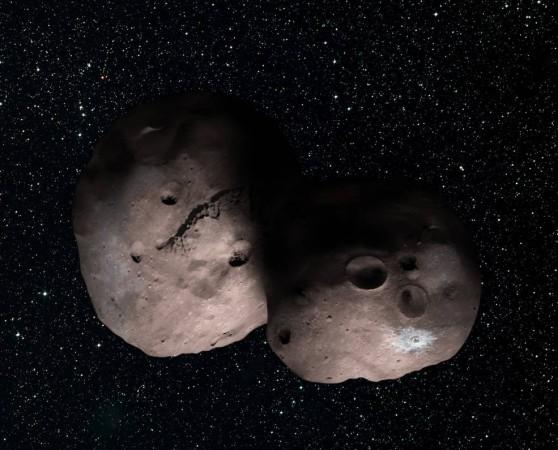
NASA's New Horizons' next deep space flyby is scheduled for January 1, 2019. The New Horizonz will explore a distant Kuiper Belt object (KBO) dubbed 2014 MU69.
ALSO READ: NASA's Hubble telescope discovers an exoplanet with a glowing water atmosphere
The astronomers don't know much about 2014 MU69. The celestial object had passed in front of Earth on July 17, 2017 and its shadow was observed by telescopes placed in a remote part of Patagonia, Argentina
Here's all you need to know about the flyby:
1. Astronomers don't know much about 2014 MU69 and the team of researchers from New Horizons hope to observe this celestial body. The oscillations would help explain many details about the body present in the foreground, which would include the shape and size of the object.
2. The shape of 2014 MU60 is guesstimated to be extreme prolate spheroid or even a binary pair, as per the observations made by researchers based on the oscillations. They also think that the KBO can be two bodies orbiting in a very close proximity or even touching each other, which is defined as contact binary.
3. The most recent observation of the KBO's stellar occultation was made by the researchers on July 17 with the help of Hubble Space Telescope and European Space Agency's Gaia satellite to figure out where exactly MU69 would cast a shadow on Earth's surface. The previous observations were made by the researchers on June 2 and July 10.
4. This KBO is located beyond Pluto, at a distance of 1.6 billion kilometres (1 billion miles) from Earth. According to the analysis made by the astronomers, the size of MU69 or its components is estimated to be less than 30 kilometres (20 miles) long. In case it is a contact binary object then each of them will be about 15-20 kilometres (9-12 miles) in diameter.
5. This New Horizons flyby is going to be the most distant flyby ever. The probe would travel one billion miles beyond Pluto to assess this mysterious KBO.
6. "This new finding is simply spectacular. The shape of MU69 is truly provocative, and could mean another first for New Horizons going to a binary object in the Kuiper Belt," Alan Stern, mission principal investigator from the Southwest Research Institute (SwRI) in Boulder, Colorado said in a NASA statement.
"I could not be happier with the occultation results, which promise a scientific bonanza for the flyby," Stern added.

















